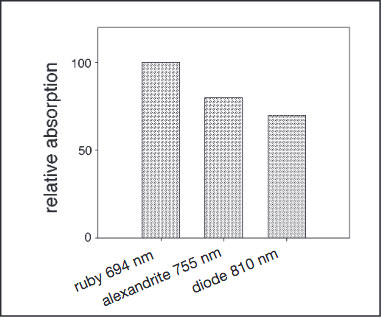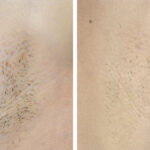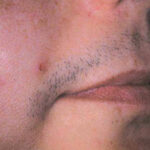Deutschland – Regensburg – Klinische Studie > Langfristige Wirksamkeit des Diodenlasers für Epilation

Long-term efficacy of a high power diode laser for hair removal
Introduction
Aim of the Study
To investigate the longterm efficacy of a high power diode laser forhair removal:

Figure 1: Absorption of melanin at three differentwavelengths normalized to 694 nm (ruby laser)









